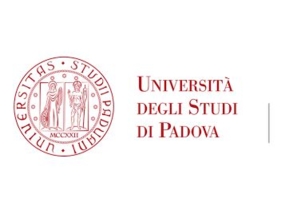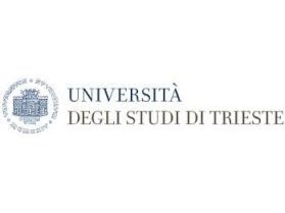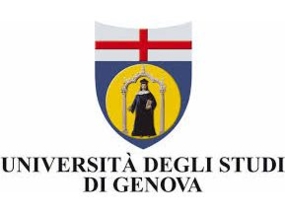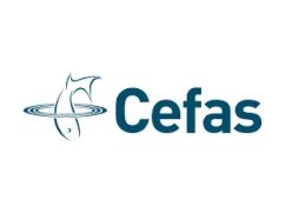VIVALDI-related articles published in 2017
Manuscript: Adsorption of norovirus and ostreid herpesvirus type 1 to polymer membranes for the development of passive samplers (Hubert Francoise, Morga Benjamin, Renault Tristan, Le Guyader Soizick)
Published in the Journal of Applied Microbiology, 2017, http://doi.org/10.1111/jam.13394 (manuscript available in open access here)
VIVALDI partner involved: IFREMER (FR)
Ifremer researchers detailed the development of passive sensors aiming at detecting the OsHV-1 virus or norovirus. These sensors have been elaborated in laboratory conditions. They are currently being tested in the natural environment.
----
Manuscript: Diversity and evolution of TIR-domain-containing proteins in bivalves and Metazoa: New insights from comparative genomics (Marco Gerdol, Paola Venier, Paolo Edomi, Alberto Pallavicini)
Published on Developmental and Comparative Immunology, 2017, http://dx.doi.org/10.1016/j.dci.2017.01.014 (open access pre-print available here)
VIVALDI partners involved: UNITS, UNIPD (IT)
A comparative analysis of bivalve genomes has allowed identifying 14 novel TIR-DC protein families. These proteins are known to play a key role in the regulation of the inflammatory response and the production of antimicrobial effectors.
---
Manuscript: Whole-genome enrichment provides deep insights into Vibrio cholerae metagenome from an African river. (Vezzulli L, Grande C, Tassistro G, Brettar I, Höfle MG, Pereira RPA, Mushi D, Pallavicini A, Vassallo P, Pruzzo C)
Published in Microbial Ecology, 2017, doi: 10.1007/s00248-016-0902-x
VIVALDI partner involved: UNIGE (IT)
A novel whole genome enrichment technology for the bacteria Vibrio cholerae was developed and applied to contaminated river water so as to obtain 2000 times more pathogen DNA at the genome level. This protocol could be applied to other microbial pathogens with important application in outbreak epidemiology and microbial source tracking.
---
Manuscript: Oyster RNA-seq Data Support the Development of Malacoherpesviridae Genomics. (Rosani U, Venier P)
Published in Front Microbiol, 2017 Aug, doi: 10.3389/fmicb.2017.01515
VIVALDI partner involved: UNIPD (IT)
Viral infections caused by the Ostreid Herpesvirus type 1 (OsHV-1) are greatly challenging the oyster aquaculture sector. Molecular knowledge on the onset of productive infections is essential to outline mitigation and prevention strategies. Although belonging to the same group of several human and vertebrate viruses, mollusc viruses are far related to other members of the Herpesviridae family, and therefore more difficult to understand. This publication describes the molecular behaviour of the virus, identifies gene signatures possibly associated to different infection phases and to release a first interactive dataset of OsHV-1 gene expression values.
---
Manuscript: Haemocytes from Crassostrea gigas and OsHV-1: A promising in vitro system to study host/virus interactions. (Benjamin Morga, Nicole Faury, Stéphane Guesdon, Bruno Chollet, Tristan Renault)
Published in Journal of Invertebrate Pathology (2017) DOI:10.1016/j.jip.2017.09.007 (manuscript available in open access here)
VIVALDI partner involved: Ifremer (F)
The present study aimed at finding out if haemocytes (cell of the haemolymph of various invertebrates) can host the OsHV-1 virus in the Pacific oyster. To this end, haemocytes were collected from healthy Crassostrea gigas spat and exposed in vitro to a viral suspension. Results showed that the virus was detectable one hour after contact and the number of virus transcripts increased over time in association with an increase of viral DNA detection, which suggested that the virus was able to replicate rapidly inside haemocytes maintained in vitro. All the results suggested that the in vitro model using haemocytes can be valuable for providing new perspective on virus-oyster interactions.
----
Manuscript: Immunerelated genes in gastropods and bivalves: a comparative overview (Marco Gerdol)
Published in Invertebrate Survival Journal (2017) https://doi.org/10.25431/1824-307X/isj.v14i1.103-118
VIVALDI partner involved: UNITS (IT)
----
Manuscript: Molecular characterization of an Endozoicomonas-like organism causing infection in king scallop Pecten maximus L. (Irene Cano, Ronny van Aerle, Stuart Ross, David W. Verner-Jeffreys, Richard K. Paley, Georgina Rimmer, David Ryder, Patrick Hooper, David Stone, and Stephen W. Feist)
Published in Applied and Environmental Microbiology, 2017, doi:10.1128/AEM.00952-17
VIVALDI partner involved: CEFAS
One of the fastest growing fisheries in the UK is the king scallop Pecten maximus L., also currently rated as the 2nd most valuable. Mass mortality events in scallops have been reported world-wide, often with the causative agent(s) remaining uncharacterized. This publication characterises an intracellular bacteria infecting gill scallop, resembling rickettsia-like organisms, which could be related to these mass mortality events.
---
Manuscript: Myticalins: A Novel Multigenic Family of Linear, Cationic Antimicrobial Peptides from Marine Mussels (Mytilus spp.) (Gabriele Leoni, Andrea De Poli, Mario Mardirossian, Stefano Gambato, Fiorella Florian, Paola Venier, Daniel Wilson, Alessandro Tossi, Alberto Pallavicini, Marco Gerdol)
Published in Marine Drugs, 2017, doi: 10.3390/md15080261
Partners involved: UNITS & UNIPD
----
Manuscript: Early gametogenesis in the Pacific oyster: new insights using stem cell and mitotic markers (Patricia Cavelier, Julien Cau, Nathalie Morin, Claude Delsert)
Published in Journal of Experimental Biology, 2017, DOI: 10.1242/jeb.167734
Partner involved: Ifremer
Fluorescent markers targeting celle cycle and multiplication were used in microscopy to better understand the oyster sexual cycle. These markers are promising for tissue image analysis in bivalves.






